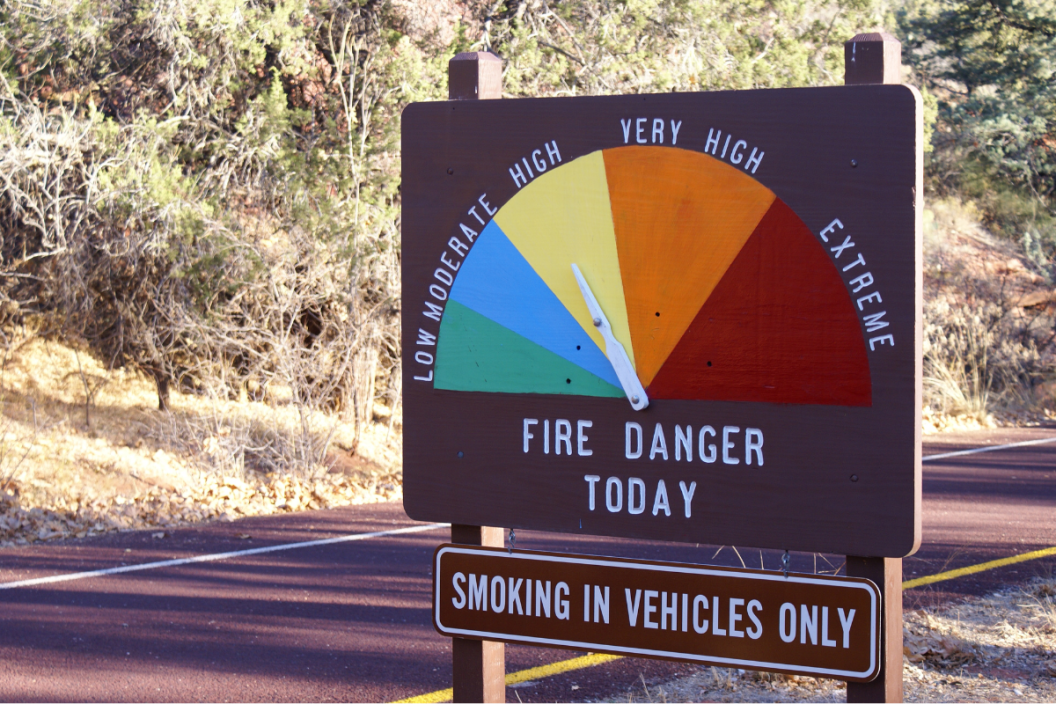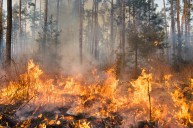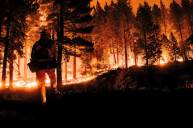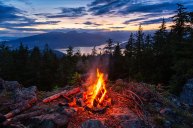If you live in the western United States, you're probably familiar with wildfires. I was living in Fort Collins, Colorado, when the Cameron Peak Fire ignited on August 13th, 2020, just 40 miles west of town. It ended up being the largest wildfire in Colorado history after burning 208,913 acres.
I remember walking out to my car that late summer and opening the driver's door to a gust of ash puffing out at me. I swept ash from my patio, dusted it out of my house, and breathed it into my lungs. Every time the sun hid behind the smoke column, the light filtering through my windows turned red. All of Fort Collins' adjacent federal public lands closed, and it canceled many folks' early hunting seasons.
Although wildfires are not always catastrophic, they are something we expect to become more common as droughts increase in severity and average temperatures soar. As outdoorspeople, it's our responsibility to know and understand the fire danger for the lands we recreate on. Local U.S. Forest Service offices generally post fire danger ratings on a sign outside for the public to take note of. You can always call your USFS office to find out that day's level of risk. It's easy to find your local ratings online, too. But what exactly do they mean?
The National Fire Danger Rating System
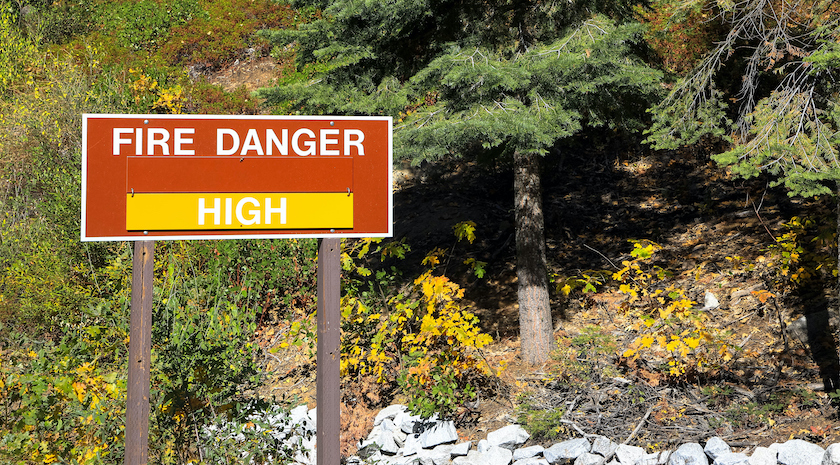
Eisenlohr via Getty Images
The National Fire Danger Rating System (NFDRS) is what fire managers use to estimate the fire danger for a given area. It considers current and projected fire danger factors to reflect an area's fire danger needs. These factors include topography, fuels, weather, and risk. There are five levels that fire managers use to communicate wildfire risks with the public.
Fire Danger Level: Low
When the fire danger level is "low," fuels won't ignite easily. However, it doesn't mean that an intense heat source like lightning wouldn't be able to start a large fire. Large fuels (such as downed trees) are likely to smolder under these conditions. Grassfires are of the most concern. Under this rating, it's assumed that controlling any fires would be easy.
Fire Danger Level: Moderate
A "moderate" rating means fires could start from the most accidental causes. However, this rating implies that the number of fire starts is relatively low. For example, if a grassy meadow starts on fire on a windy day, the meadow would burn and spread quickly. Like the "low" rating, wood fires are still not of great concern. Fire severity is average except for areas with many concentrated fuels. Still, fire managers state that under "moderate" rated conditions, wildfires would be reasonably easy to control.
Fire Danger Level: High
A "high" fire danger rating means wildfires can start quickly from most causes. It also means small fuels, like grasses and pine needles, will readily ignite. Unattended campfires are likely to cause problems. If ignited, fires spread quickly under this rating. Areas of high-intensity burning will focus on slopes or areas with concentrated fuels. Fires can become seriously dangerous and challenging to control when the fire danger is high unless they are put out while small.
Fire Danger Level: Very High
The second most severe rating is "very high." When the fire danger is very high, fires will start quickly from most potential ignition sources. Under this scenario, wildfires spread rapidly and can promptly increase intensity, especially right after ignition. Small fires can quickly become large and exhibit extreme fire intensity, such as long-distance spotting and fire whirls.
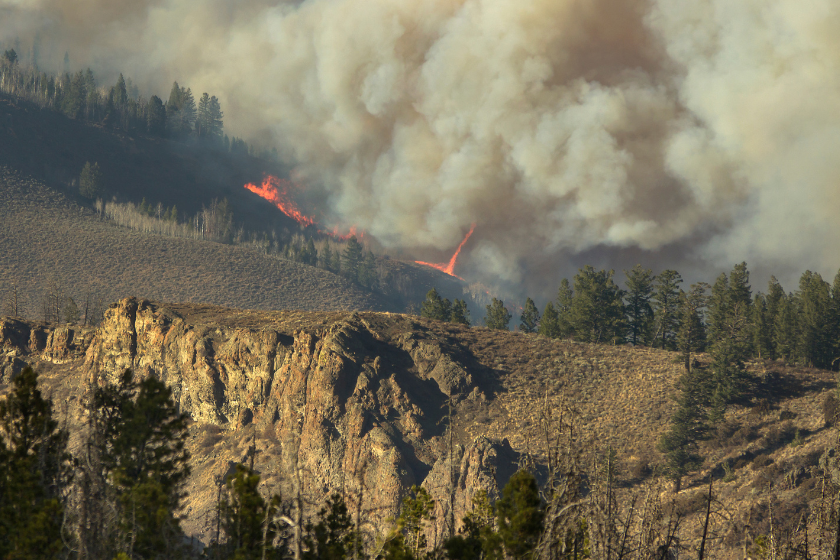
Flames and a fire whirl devour sagebrush and pines in the Arapahoe National Forest and Rocky Mountain National Park. milehightraveler via Getty Images
Long-range spotting means that glowing embers are carried high up into our air column and fall downwind of the primary fire, starting new fires up to a quarter of a mile or more from the original fire. Fire whirls are spinning vortex columns of hot air and gas rising from a wildfire. Whirls include debris, smoke, and flames and can be less than a foot to over 500 feet in diameter. They can have the intensity of a small tornado. These fires can be challenging to control and will often become much more significant and longer-lasting.
Fire Danger Level: Extreme
The most dangerous fire rating is "extreme." Unfortunately, this is the rating I'm most familiar with in my current home in western Colorado. When the danger is extreme, fires of all types start quickly and burn with great intensity. Every fire is potentially severe. Small fires become big fires much faster than at the "very high" danger level. Spot fires are probable, with long-distance spotting likely. Spot fires are ignited outside of the perimeter of the primary fire by flying sparks or embers. It's common for multiple spot fires to occur downwind of a large wildfire.
Fires ignited under the NFDRS extreme fire danger conditions are tough to fight and may become very dangerous. They often last several days and threaten homes, neighborhoods, and lives.
Precautions For Protecting Your Home Against Wildfire

milehightraveler via Getty Images
The U.S. Forest Services has a few recommendations to protect yourself and your home from wildfire. First, they recommend calling 911 and reporting a wildfire if you spot one close to your home. Stay on the phone to answer any potential questions dispatch may have. Second, dress accordingly to prevent burns and scars. Long pants and cotton or wool long sleeve shirts and jackets are best. Leather gloves will further protect you. If you can't evacuate your home, close all your doors while keeping them unlocked, keep your family together, and remain calm. Remember that if it's hot in your house, it's much hotter outside. Post-fire, examine your roof and yard for burning materials. Keep doors and windows closed to keep out any embers potentially blowing in the wind.
It's worth chatting with your state's public land managers to see if they can recommend any fire mitigation practices on your private land before a fire starts, too. For example, the Colorado State Forest Service provides home assessments in Colorado. It recommends managing your property to stay fire safe, including removing fuel growing near your home or replacing your current roofing with a less-flammable material.
You'll likely be evacuated if a wildfire ignites in your neck of the woods. Similar to the news reports we've all read the past few years, evacuating is easier said than done. Traffic jams may occur on popular escape routes such as major highways and roads. Pets and livestock must be considered whether you have dogs, cats, chickens, or horses. It's essential to have a go-bag in place and a plan to keep your loved ones safe in case of evacuation; you may only have a few minutes to leave your home.
Wildfires can be scary and hazardous situations. However, they are usually easily contained, and firefighters can handle the problem quickly and safely. Regardless, it's important to understand fire danger ratings, use safe fire practices in the backcountry, and have a plan in place just in case a fire pops up near you.
